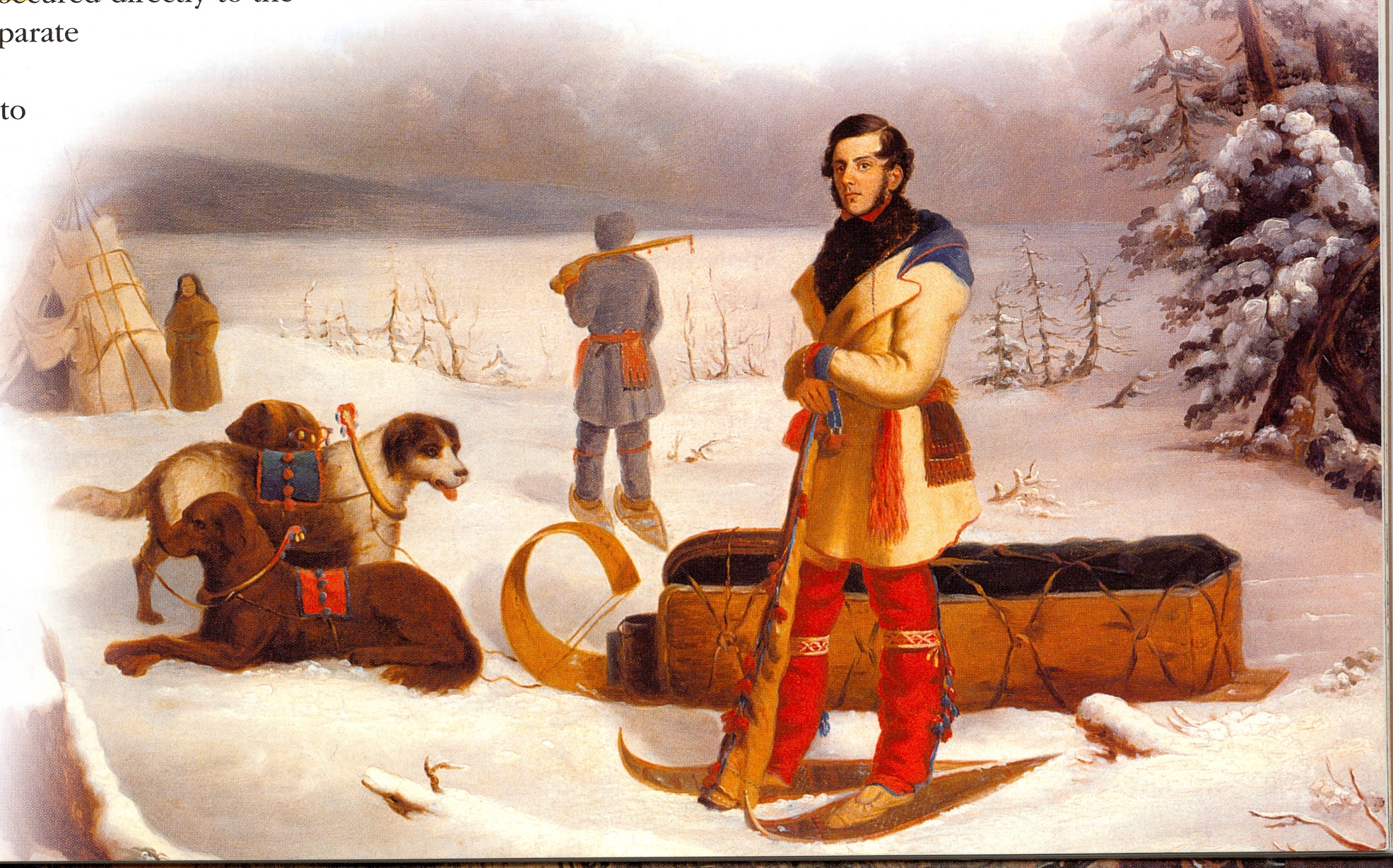





Some questions about the usage of dogs by canadiens and fur trade employees has come up in a conversation and I figured a quick blog posting would be the easiest way to share some information. This will not be an article proper but more of a regurgitation of information, especially images, that I happen to have handy and in a digital format. This is FAR from a complete listing of quotes or images and is actually slim on fur trade specific usage of dogs. Perhaps I will come back, and those fur trade quotes, and polish this as I have opportunity.
“In many places hereabouts they use their dogs to fetch water out of the river. I saw two great dogs today put before a little cart, one before the other. they had a neat harness, like horses, and bits in their mouths. In the cart was a barrel. The dogs are directed by a boy, who runs behind the cart, and as soon as they come to the river, they jump in, of their own accord. When the barrel is filled, the dogs draw their burden up the hill again, to the house they belong to. I have frequently seen dogs employed in this manner during my stay at Quebec. Sometimes they put but one dog before the water-carts, which are made small on purpose. The dogs are not very great, hardly if the size of our common farmer’s dogs. The boys that attend them have great whips, with which they make them go occasionally. I have seen them fetch not only water, but likewise wood and other things.” -Peter Kalm 1749
Kalm later talks about dogs being used to pull sleds (commonly documented in New France), but in this he says, “Almost all the wood which the poorer people in this country fetch out of the woods in winter is carried by dogs, which have therefore got the name of horses of the poor people.” This reminds me of the old French Proverb found in a French/English dictionary written by Randle Cotgrave in 1611 “Charruë de chien ne vaut rien” (The plow that a dog draws is not worth the driving.)
Elizabeth Baird talks about Green Bay, WI in the early 19th century, “A description of my cariole, or dog sledge, a perfect beauty, holds a pleasant place in memory. It was handsome in shape, with a high back, and sides sloping gracefully to the front. The color was a dark green, inside of cream color, the runners black. It was drawn by two large dogs harnessed tandem. One dog was perfectly white, the other black. The white one was an old dog who had seen much service: his name was ‘Caribou.’ The black one responded to the name of ‘Nero.’ They young man who drove them was Francois LaCroix. This turn-out we owned from the time I was about seven years old until I reached ten, possibly later, but this is my reckoning at this remote time. The name of my cariole I had nearly forgotten to five was la Boudeuse, (pouter). Why this name I cannot imagine. Dogs cannot be broken or trained to the harness in the manner that horses are. They will not be driven with bridle of rain. A person must run along beside them to keep them in order. In a long journey the traveler takes the risk of a continuous trip. His team may persue its way steadily for awhile, doing so as long as nothing appears on the way to excite them, but let a bird or rabbit or other game cross their vision and away they will go…” pp. 5-6
Speaking of Green Bay, WI in 1820, James Duane Doty states, “The dogs used for drawing in this country are of the middle size, and a mixture of every breed. Their harness is made something like the common dray harness; being composed of collar with tugs, a belly-band, and two back-bands, one across the shoulders and the other the hips. Three horse bells on the second band, it seems, are indispensable. They have no lines or breeching. Thus harnessed, the dogs are hitched to a train made of a white oak slab, dressed down smooth, about six feet long and fourteen inches wide, and turned up before in the shape of a sleigh runner. On the crust or ice a dog will travel, with two hundred pounds on his train, from morning to night, as fast as a man can walk. They frequently go sixty miles in a day. These dogs are starved in the summer so that they can scarcely stagger around, but bay the time the winter sets in, they are put into the fines order. When worked, they are fed only at night – not a morsel is given in the day. Fish is their common food. Pp. 205-206
Great piece on this discussion of dogs in the French era of the Great Lakes. Thank you for the quotes and images!